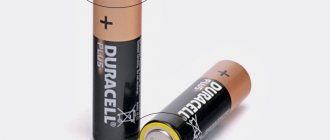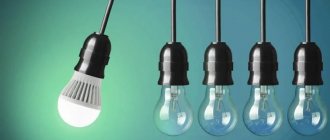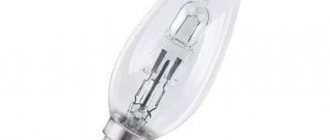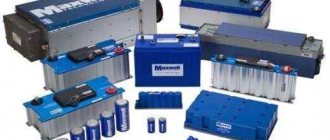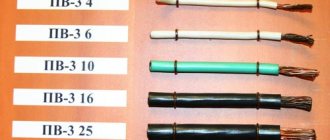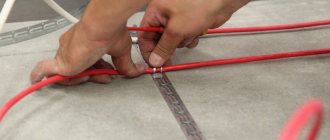Xenon lamp device.
Design of a xenon lamp.
A xenon arc lamp (XAL) produces light due to the appearance of an electric arc in a bulb in a xenon atmosphere. The design is quite simple: a glass bulb, electrodes and a housing in which everything is fixed.
The flask is made of quartz glass. Only such glass can withstand high pressure (up to 30 atmospheres when not in use and 120 atmospheres when lit) and temperature that are necessary for the lamp to operate. Some flasks for special purposes are made from sapphire. It expands the spectral range of emitted light and increases the service life of the CDL.
Depending on the purpose, the flask has different shapes: tube, U-shaped, spiral, ball.
The electrodes are made of refractory tungsten, which is doped with thorium. The addition of thorium increases the lamp burnout speed. To reduce the difference in the coefficients of thermal expansion of tungsten and glass, a special buffer alloy is used: invar (a mixture of nickel and iron). On one side it is fused into the flask, and on the other, electrodes are welded into it. Also, tungsten electrodes are connected to a capacitor in the lamp body. The capacitor has a high voltage charge, reaching up to 2000 V.
A third ignition electrode is built into some CDL models. It is designed to initially ionize xenon and start the lamp discharge.
During operation, the anode gets very hot, so for powerful CDLs the design provides cooling. Light sources with a power of up to 4 kW are cooled with air, and above - with air and water.
Incandescent lamp comparisons
What kind of lamps are in the fog lights?
To make a choice in the direction of good and more efficient light bulbs, you need to understand how car halogen lamps differ from xenon lamps. To begin with, we suggest that you familiarize yourself with basic information about these lighting sources.
Light from different light bulbs
Xenon
Xenon lamps are based on a special gas, which is ignited as a result of the activation of a module installed inside the product structure. The main technical characteristic of gas-discharge light bulbs is color temperature, since each type of temperature has its own color. For example, the higher the temperature, the more blue the light will have, and the brightness will correspondingly decrease. At low temperatures, the light bulb will emit a yellow color, but the glow itself will be brighter.
Let's consider the main advantages of gas-discharge lighting sources compared to halogens:
- Minimal heating of optical lenses. The headlight glass does not heat up as much, which means that dust and dirt from the optics are much easier to remove.
- Improving the appearance of the vehicle. Many car enthusiasts use xenon as a tuning element.
- Gas discharge sources consume much less energy - at least 40%.
- Brighter illumination for more comfortable visibility.
- Xenon also has a warmer emission spectrum of the lighting flux. Thanks to this characteristic, the visibility of the road surface in the dark and when driving in bad weather will be more improved (video author - Eric Davidich smotra channel).
https://youtube.com/watch?v=8Nx1cHdjcVE
As for the disadvantages, they are as follows:
- Unlike halogen, xenon is more expensive.
- If the halogen fails, you can replace one bulb, but if the same problem occurs with xenon, you will have to change both light sources. This is due to the fact that during operation, gas-discharge lamps change their glow temperature, so the difference in color between the new and old lamp can be significant.
- Unlike halogen lamps, the installation of gas-discharge sources requires the additional installation of an ignition unit.
- When activating the optics, the driver may notice a slight delay. If you install xenon in fog lights or low beams, you must take into account that it will take some time to ignite the gas.
- Possibility of blinding oncoming drivers. Such problems are usually associated either with errors when installing lenses. or using low-quality and cheap xenon. If you want to make tuning and surprise other car enthusiasts, then install high-quality xenon - cheap lamps will only cause inconvenience to other road users.
Halogen
Halogen lamps are one of the most common and simplest lighting sources. This product is a flask; the halogen light bulb is also filled with gas, and its device is protected by special glass. The power of such sources can reach 130 W.
Main advantages:
- affordable price;
- ease of installation - took it out and replaced it (the author of the video is the Car Program channel).
Among the disadvantages of halogen lamps it is worth highlighting:
- Instability to vibrations, since the product contains an incandescent filament, as well as a tungsten spiral. As a result, the service life of halogen lamps may be reduced.
- When these lighting sources operate, the glass of the optics heats up, and this, in turn, negatively affects the illumination of the road surface, since dust and dirt settled on the lamp quickly hardens.
- Compared to xenon, the brightness of halogens will be lower.
- A lower service life should also be highlighted. If gas-discharge lighting sources allow you to work for about 3 thousand hours, then halogen lamps usually last no more than 400 hours.
And although halogens cannot boast the same technical characteristics, they are currently the most popular type of lighting sources among our compatriots.
Principle of operation.
The luminous area is located near the cathode.
A xenon lamp shines due to the appearance of plasma near the cathode. When electric current passes through xenon, gas ionization occurs. The initial stage of ionization is provided by a powerful electric charge that accumulates in the capacitor. This charge is converted into a high-voltage pulse using a step-up transformer. For ignition, a voltage pulse is required, reaching up to 50 kV for powerful CDLs (usually 20-30 kV). The transformer discharges the capacitor - an electrical pulse passes through the lamp, causing primary ionization of the gas. In lamps with an additional electrode, it takes over the ignition function. To maintain the glow, a much lower voltage is required: 85 V.
Next, the current excites more and more xenon atoms. Electrons move to new orbitals with higher energy. When the electrons return back, the excess energy is released in the form of a photon of light. The lamp begins to shine, and the luminous area looks like a cone near the cathode. When using not pure xenon, but its mixture with mercury vapor, the areas of both electrodes glow.
Quartz glass transmits ultraviolet radiation, so ozone is formed when the light source operates. It is harmful to humans. For CDL to operate indoors, forced ventilation is required.
Which is better to choose xenon for headlights
For long-distance lighting, the most optimal xenon lamps are from Philips, which have a white color (5000K) and a high level of brightness and luminous flux range. But in this case, automatic switching of the headlights is required so that they do not blind the eyes of the oncoming driver.
Gas lamps of a cool white color, with a slight blue tint (6000K), are also optimal for high beams. This option, according to market statistics, is chosen by motorists in 90% of cases when purchasing xenon out of 100%.
Now let's study what shade of lighting is suitable for fog lights, rear lighting optics or low beam headlights.
What needs to be done to legalize xenon is described in the article: how to legalize xenon.
Read about repairing the xenon ignition unit here.
In the fog lights
To equip fog lights, the best solution would be to choose which xenon shines best in wet weather on wet asphalt and at night in fog.
In this case, suitable lamps are those that:
- not suitable for basic color lighting;
- their brightness does not create an air-water “wall” when visually perceiving a light beam;
- have a sufficient range of luminous flux to “break through” the humidity in the air.
Yellow and green xenon are most often used in such headlights. But for these color lamps, it is best to set the optimal options for high beam to 4300-6000K.
Then, when paired, the lighting will be most familiar to the driver’s eye, and optical discomfort will not be created on a long trip.
In reverse
For rear lighting lamps, xenon lamps can have a glow temperature starting from 8000K. They have the lowest brightness, the bulbs are dimmer, but they have interesting colors - purple, pink, red, gray-blue.
For rear lighting, dim light is allowed in the dark, but only the lamp must correspond to the power that was installed previously.
A standard kit for one flashlight should include the following elements:
- ignition unit – 2 pcs.;
- gas discharge lamp – 2 pcs.;
- wires for connections;
- clamps and fasteners for proper installation;
- diagram and instructions;
- warranty coupon;
- package.
If you install 35-watt lamps in reverse, they often show overheating, which creates a smell of burnt plastic.
The approximate cost of factory rear lighting kits starts from 2,000 rubles, with an average of 5,000 rubles.
In low beam lenses
For close-up lighting, not only the intensity of the light is very important, but also the safety of the optics system. Lighting fixtures should not overheat when producing their brightness.
For low beam lighting, xenon lamps with a power of 35 W (W) are suitable only if the headlight has a lens. Then the luminous flux will be optimal, and overheating will not be observed.
Given the reflectivity of the lens in the headlights, a 50 W bulb will create a thermal effect inside the headlight cavity, which will lead to unwanted overheating.
Important! The best way to prevent yourself from being deceived and buying a fake is to purchase xenon lamps or entire sets only in branded stores:
- Firstly, they will always let you view the quality certificate for the product.
- Secondly, any store of a well-known brand is responsible for the quality (and compliance with the quality) of its product in order to remain in the market as a leader for as long as possible.
On a motorcycle
Tuning in motorcycle transport as xenon headlights with a temperature of 8000 and above is excluded.
For two-wheeled vehicles, dim lights with a short beam range are dangerous. There is a high probability of colliding with objects at high (or any) speed.
The spectral choice of motorcycle xenon comes down to the following options:
- white-yellow (4300K);
- white crystal (5000K);
- white-blue (6000K);
- light blue (8000K) “Crystal”.
The best options will be those that have ignition units specifically designed for motorcycles. For example, the ballast brand is SVS Slim 12V 35W, which has small dimensions and a high-voltage wire of sufficient length.
The peculiarity of a kit for xenon lighting in a motorcycle or moped is the difficulty of finding the right one.
Not every motorcycle will fit the HID xenon kit, which was provided by the manufacturer for vehicles. In addition, paired lamps are more difficult to install in a single-headlight moped or motorcycle.
You have to look for a specially designed kit for motor vehicles. On average, a kit from the factory for a motorcycle will cost from 2,000 to 2,750 rubles.
Types of xenon lamps.
Types of bases for xenon light sources.
Depending on the purpose, there are three types of different bases: H, HB and D.
Based on their design, there are spherical, tubular and ceramic light sources.
Ball xenon lamps are small, the bulb is in the shape of a ball. Distinctive features are the small size of the luminous area and high brightness of the light.
The electrodes are located at a minimum distance from each other: 3-6 mm or 0.3-2.5 mm for special-purpose lamps. The power of ball light sources reaches 7 kW.
According to Russian standards, ball lamps are designated as DKsSh (arc xenon ball).
This type of light source is widely used for car headlights.
Ceramic light sources are distinguished by the presence of a ceramic bulb in which holes are made for the passage of ultraviolet radiation. They are used in medicine and pharmaceuticals for disinfection.
Tubular CDLs contain a flask in the form of a tube of different lengths and diameters. The electrodes can be located at a considerable distance from each other. According to Russian standards, they are designated as DKsT (arc xenon tubular). The power of such lamps is in the range of 2 W - 50 kW.
For the correct and safe use of tubular xenon lamps, current limiting devices are required, which are built into the electrical circuit. This type of light source is used for external and internal lighting of large areas and objects.
In addition, there is a division of CDL into the following types:
- long-term use with a short arc (similar to xenon headlight lamps);
- long-term use with a long arc (similar to tubular);
- flash lamps (with an additional third electrode for ignition).
There are also lamps operating on direct and alternating current.
Lamp/base table
Here is a table of the main markings by type of lamp and base, as well as in which systems they are used:
| Car Bulb Type: | Base marking: | What system is it used in: |
| R2 | P 45t | Head optics for low/high beam |
| HB 3 | P 20d | -//- |
| HB 4 | P 22d | -//- |
| HB 5 | РХ 29t | -//- |
| H 1 | R 14.5s | -//- |
| N 3 | RK 22s | -//- |
| H 4 | P 43t | -//- |
| N 7 | РХ 26d | -//- |
| N 11 | PGJ 19-2 | -//- |
| N 9 | PGJ 19-5 | -//- |
| N 16 | PGJ 19-3 | -//- |
| H27 W/1 | PG 13 | -//- |
| H27 W/2 | PGJ 13 | -//- |
| D 2S | P 32d-2 | Xenon auto lamp |
| D 1S | PK 32d-2 | -//- |
| D 2R | P 32d-3 | -//- |
| D 1R | PK 32d-3 | -//- |
| D 3S | PK 32d-5 | -//- |
| D 4S | P 32d-5 | -//- |
| W 21W | W 3x16d | Front turn signal |
| P 21W | BA 15s | -//- |
| PY 21W | BAU 15s/19 | -//- |
| H 21W | BAY 9s | -//- |
| W 5W | W 2.1×9.5d | Side direction indicator |
| WY 5W | W 2.1×9.5d | -//- |
| W 21W | W 3x16d | Stop signal |
| P 21W | VA 15s | -//- |
| P 21/4W | BAZ 15d | Side light or brake light |
| W 21/5W | W 3x16g | -//- |
| P 21/5W | BAY 15d | -//- |
| W 5W | W 2.1×9.5d | Side light |
| T 4W | BA 9s/14 | -//- |
| R 5W | BA 15s/19 | -//- |
| R 10W | BA 15s | -//- |
| C 5W | SV 8.5/8 | -//- |
| P 21/4W | BAZ 15d | -//- |
| P 21W | BA 15s | -//- |
| W 16W | W 2.1×9.5d | Reversing light |
| W 21W | W 3x16d | -//- |
| P 21W | BA 15s | -//- |
| W 21/5W | W 3x16g | -//- |
| P 21/5W | BAY 15d | -//- |
| HB 3 | P 20d | Front fog lamp |
| HB 4 | P 22d | -//- |
| H 1 | P 14.5s | -//- |
| N 3 | PK 22s | -//- |
| N 7 | PX 26d | -//- |
| N 11 | PGJ 19-2 | -//- |
| N 8 | PGJ 19-1 | -//- |
| W 3W | W 2.1×9.5d | Side lights, parking light |
| W 5W | W 2.1×9.5d | -//- |
| T 4W | BF 9s/14 | -//- |
| R 5W | BA 15s/19 | -//- |
| H 6W | PX 26d | -//- |
| W 16W | W 2.1×9.5d | Rear turn signal |
| W 21W | W 3x16d | -//- |
| P 21W | BA 15s | -//- |
| PY 21W | BAU 15s/19 | -//- |
| H 21W | BAY 9s | -//- |
| P 21/4W | BAZ 15d | Rear fog light |
| W 21W | W 3x16d | -//- |
| P 21W | BA 15s | -//- |
| W 21/5W | W 3x16g | -//- |
| P 21/5W | BAY 15d | -//- |
| W 5W | W 2.1×9.5d | License plate lights |
| T 4W | BA 9s/14 | -//- |
| R 5W | BA 15s/19 | -//- |
| R 10W | BA 15s | -//- |
| C 5W | SV 8.5/8 | -//- |
| 10W | SV 8.5T11x37 | Light in the cabin and in the trunk |
| C 5W | SV 8.5/8 | -//- |
| R 5W | BA 15s/19 | -//- |
| W 5W | W 2.1×9.5d | -//- |
When planning to purchase new car lamps, you should first pay attention to the type of base, as well as the power of the device that should be used in a particular module. The easiest way to do this is to dismantle the failed light bulb and select a similar one. If the lamp is not preserved after an accident, then you can select a suitable option using the table above.
In conclusion, we offer a short video review of common modern car lamps and a comparison of which is better:
Top 10 car headlight bulbs. Which lamps are better?
Specifications.
Color temperature DCL.
- Life time. Quite long: about 3000 hours. The design of the lamp contains no elements that can “burn out”. The service life is limited by the characteristics of the device. With prolonged use, due to high heating, the glass becomes brittle, darkens due to metal deposits on the glass, the electrodes become unusable and melt.
- The power of xenon light sources can reach up to 50 kV.
- High color rendering: over 80%. This light is very comfortable for the eyes and does not distort colors. Therefore, CDLs are widely used in photography and filming.
- Colorful temperature. The light spectrum of a xenon lamp is as close as possible to that of the sun. It appears white to the human eye. The color temperature of the radiation starts from 4000 K. Through the use of certain additives to xenon, other spectral colors are possible: 4300 K and 5000 K. In car headlights, light sources with temperatures of 4300, 5000 and 6000 K are most often used.
What it is
Xenon car lamps are a gas-discharge light source that provides a very bright glow, close to natural daylight. A special feature of the work is the presence of xenon gas in the flask with an electric arc. In such a circuit there is no need to use an incandescent filament, which can easily burn out due to voltage changes.
Photo - glow
An HID lamp uses a mixture of inert gases that, when electrical energy is passed through, begin to emit light. Mercury vapor is also added to xenon, which ensures that the light source operates under high pressure.
The color of the light depends on the composition of the mixture. For example, xenon itself glows bright white, while a mixture with mercury vapor produces a cooler, bluish glow. Therefore, options with a mixture of gases are mainly used in medicine - they are excellent for room sterilization and ozonation.
Advantages of xenon lamps:
- Durability of work. The absence of an incandescent filament makes such lamps more durable than conventional ones. In addition, they can be used in extreme operating conditions, which is also a significant advantage. On average, a light source with a xenon mixture is replaced after 100,000 kilometers, but in most cases this figure is greatly underestimated, and the lamps last up to 200,000;
- High brightness and light output. Xenon models have a light output 2.5 times higher than halogen models. Therefore, they are used to ensure the best visibility of the road at night. Such lamps are often called anti-fog lamps, because even in the most shaded areas they can provide almost ideal lighting;
Photo - comparison of xenon and halogen headlights - Natural low beam temperature. Halogen lamps, which are often used for car headlights, emit a yellowish glow that is unusual for the human eye and can somewhat distort visibility. In this case, xenon glows white when burning, which increases the safety of the driver and pedestrian;
- Low electrical energy consumption. The lamp uses no more than 30 watts of energy to operate, which helps save battery life. It should also be noted the low load on the on-board computer during operation;
- High efficiency indicators. A standard incandescent lamp has an efficiency of 30%. Most of the incoming energy is converted into heat, but xenon emits a cool glow. This characteristic speaks not only about the color of the light, but also about the heating of the lighting fixture. More than half of the incoming power is aimed specifically at providing lighting.
The disadvantages include the high cost of the lamp, but it is compensated by savings on repairs and the durability of the device. Now the most popular models are Philips; they are considered the highest quality xenon lamps.
Photo - Philips lamp
Replacing such a lamp causes a little discomfort. Considering that the pressure at which the lamp operates exceeds 25 atmospheres, during an emergency its fragments can fly over a huge distance, causing harm along the way. Therefore, in most cases, replacement of such light sources is carried out only by specialists who have special protective glasses and suits for such purposes.
Where are they used?
Xenon headlight bulbs.
From an economic point of view, the most profitable area of application for CDL is lighting large open spaces. This is the lighting of squares, stadiums, skating rinks, quarries, construction sites, and huge production workshops.
Due to their excellent color rendering, xenon lamps are successfully used in projectors, theater, stage, film lighting, and photographic equipment.
In optical instruments, CDLs are used when a minimum luminous area of the light source is required. This ensures the focusing accuracy of the device. CDLs are also used in climatic chambers when testing various materials for light resistance, radiation heating installations, photo exposure, etc.
In recent decades, xenon lamps have been used in the production of automobile headlights. However, due to the brightness of the light, the installation of an additional system for adjusting the angle of headlights and headlight washers is required by law.
Mercury-xenon and ceramic lamps are used in medicine for physiotherapy, sterilization and ozonation.
Series D
Often standard lamps in this series are presented by companies such as Philips and Osram. They have only one color temperature of 4300 Kelvin (white light with a yellow tint
- D1S xenon lamp is expensive and difficult to use.
- D1R xenon lamp , in the factory version, is equipped with a special coating that eliminates parasitic glow.
- D2C xenon lamp is usually installed in a lens.
- D2R xenon lamp is a D2C , only with optical coating as in the D1R . Only unlike D2C , the D2R is installed in regular, non-lensed headlights
- D4S xenon lamp is installed on Toyota and Lexus cars, and in the lens. The lamp differs from all of the above in that it does not contain mercury. Because of this, there are differences in operation and ignition.
Advantages and disadvantages.
pros
- high brightness and luminous efficiency;
- short flare-up period;
- long service life;
- the light spectrum is close to natural;
- high efficiency: bright light with low energy consumption to maintain the glow;
- wide power range;
- work at low temperatures.
Minuses
- high price;
- complexity of connection and the need for ballasts;
- explosion hazard;
- high heat;
- the need for automatic adjustment of headlights for a car.
Summing up
In 2022, finding xenon lamps will not be a problem - unlike 1992, there are now a myriad of companies producing them. And it is worth recognizing that, despite the hegemony of Philips, even inexpensive Chinese and Russian brands can offer competitive options at a very attractive price. Yes, they will not be as good and are unlikely to last even half as long as the top models, but given the difference in cost, this is acceptable. Therefore, you shouldn’t chase brands - yes, ideally, of course, buy a Philips D1S X-tremeVision gen2 4800K or Osram, MTF and Neolux models. But even inexpensive SVS like the Silver Series D1S 6000K are quite capable and provide good levels of illumination. And safety depends not only on the lamps, but also on the person and compliance with traffic rules, the main thing is to buy original products with a guarantee and complying with international standards.
Sources
- https://LampaExpert.ru/avtomobilnye-lampy/ksenon/kak-svetit-5000k-4300k-6000
- https://autolab24.ru/kakoj-ksenon-luchshe-4300-ili-5000/
- https://motorsguide.ru/gadgets/kak-vybrat-ksenon
- https://avtopravozashita.ru/ksenon/kakoj-ksenon-luchshe.html
- https://obzor-expert.com/kakoj-ksenon-luchshe-postavit-top-10-luchshih-ksenonovyh-lamp/
- https://AvtoVinil-Ekb.ru/to-i-tyuning/kakoj-ksenon-luchshe.html
- https://vyborok.com/rejting-luchshih-ksenonovyh-lamp-dlya-avtomobilya/
Features of operation.
Tubular DCL.
To increase the service life of the CDL, you must follow simple rules.
- Do not allow the light source to be turned on and off frequently.
- After turning off, let cool for 10-15 minutes. If this is not done, the spectrum will acquire red and green shades.
- Use high-quality commissioning equipment.
- Make sure the light source is positioned correctly: electrodes in a vertical position, anode on top.
- Wear a protective plexiglass case when transporting and replacing paws. The protective cover will prevent mechanical damage and grease contamination of the flask from human fingers.
- Touch xenon lamps only with protective gloves. Otherwise, be sure to degrease the glass surface with alcohol.
- If the glass bulb is damaged at the slightest level, discard the lamp.
- The average startup voltage of a xenon lamp is 30,000 V. Be careful not to touch the wires, light source and equipment while the light source is operating, before and after startup.
Audi A4 Green grasshopper ADRushka › Logbook › ALL ABOUT XENON! (ALL ABOUT CHOOSING XENON (repost))
I WAS LOOKING ON THE WEB AND I CAME UPON A FORUM, A LOT OF USEFUL INFORMATION, I THINK IT WILL BE USEFUL TO MANY!
ALL ABOUT CHOOSING XENON.
Gentlemen, I see a lot of frequent questions about xenon for Primok, and I myself spent almost a week choosing and understanding what I needed. Therefore, I tried to collect the information in one post - I think it will be useful Information collected from our forum and other sources
Lamp sockets on P11 Headlamp (Low Middle): 12V - 55W (H1) Headlamp (High Far): 12V - 55W (H1)
Lamp sockets on P12 Headlamp (Low Near): 12V - 55W (H7) Headlamp (High Far): 12V - 55W (H7) Front fog lamp (PTF): 12V - 55W (H11)
Lamp sockets on P12 for right-hand drive cars Headlamp (Low Middle): 12V - 55W (HB4) Headlamp (High Far): 12V - 55W (HB3)
About xenon (Glow temperature)
So what temperature should you choose?
Color temperature is measured in degrees Kelvin and reflects the color produced by a light source.
Unfortunately, there is a common misconception among people that the higher the color temperature, the more powerful the lamp. Color temperature is just a model that tells us what the temperature of a heated ideal body should be for it to glow in one color or another. So the sun gives us white (in our understanding) light, the temperature on the surface of the sun is 5500K, so we can say that a lamp that gives the same light in the spectrum as the sun has a color temperature of 5500K.
The most common lamp color temperatures are:
3500K (Yellow) - suitable for fog lights as main lighting not suitable
4300K (White-yellow) - the brightest light, this is the temperature set on factory cars in the original
5000K (White color) - white color of xenon glow - The most suitable choice! (specifically in relation to beautiful / maximum lighting)
6000K (White-blue color) cool white with slight blue
7000K blue, the brightness is much lower, it’s hard to drive with such light
8000K (rich cyan color) blue light purple, brightness is even worse
That is, the higher the color temperature, the closer the color of the lamp is to violet, and the lower it is to yellow.
Temperatures above 6000K for the brightest xenon are no longer suitable for practical use, since blue (7000K) and blue (8000K) colors are not much better in brightness than conventional halogen lamps.
Do I need it
Up to 40% of car accidents occur due to poor visibility on the roads. During inclement weather, the number of accidents increases significantly.
Rain, fog, smog, all these natural phenomena are frequent companions of drivers. The light of a halogen lamp in rain or fog gives rise to the phenomenon of the so-called light wall. When, instead of the road surface, you see raindrops or a glowing column of fog.
Xenon is a highly coherent (all emission spectra are in a narrow range) light source. The higher the coherence of light, the less it is affected by the environment. Xenon does not form a light wall.
Here's a comparison of what HID and halogen lighting looks like
Buying Xenon - what to take?
There are a huge number of manufacturers today – but you can try to identify the most common ones without an obvious leftist
By and large, different manufacturers and prices differ only in a few parameters 1) Service life of the unit and lamp 2) The period during which the lamp does not lose its color Everything else, to a large extent, only differs in price Here is a sample of the manufacturer - price and percentage of failures
Berus (Korea) - xenon
7000r – refusals
